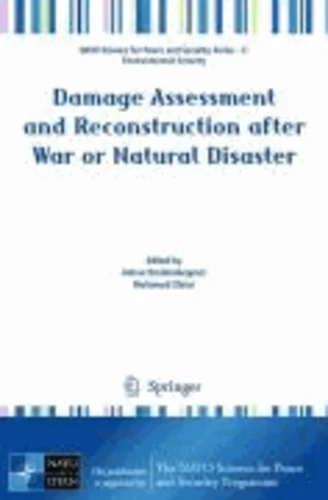Damage Assessment and Reconstruction after War or Natural Disaster
Par :Formats :
- Paiement en ligne :
- Livraison à domicile ou en point Mondial Relay indisponible
- Retrait Click and Collect en magasin gratuit
- PrésentationBroché
- Poids0.578 kg
- Dimensions15,5 cm × 23,5 cm × 2,4 cm
- ISBN978-90-481-2384-1
- EAN9789048123841
- Date de parution01/06/2009
- CollectionNATO Security through Science Se...
- ÉditeurSpringer
Résumé
This book aims to provide a critical assessment of the current knowledge and to indicate new challenges that are brought by the present time in dealing with frequent man-made and natural disasters, resulting in damage to structures, infrastructure and human environment. The common ground for all problems of this kind from the viewpoint of scientific contents is the need to provide a quick assessment of the destructive action and its consequences, quick reconstruction, as well as the new basis for a sustainable development of affected areas.
The present threat of the terrorist attacks or accidental explosions, the local military conflicts, the climate change that brings soil erosion or yet the destructive earthquake motion that occurs in previously inactive regions, are several examples of the kind of disastrous situations we address herein, along with the best way of reducing their negative impact.
The present threat of the terrorist attacks or accidental explosions, the local military conflicts, the climate change that brings soil erosion or yet the destructive earthquake motion that occurs in previously inactive regions, are several examples of the kind of disastrous situations we address herein, along with the best way of reducing their negative impact.
This book aims to provide a critical assessment of the current knowledge and to indicate new challenges that are brought by the present time in dealing with frequent man-made and natural disasters, resulting in damage to structures, infrastructure and human environment. The common ground for all problems of this kind from the viewpoint of scientific contents is the need to provide a quick assessment of the destructive action and its consequences, quick reconstruction, as well as the new basis for a sustainable development of affected areas.
The present threat of the terrorist attacks or accidental explosions, the local military conflicts, the climate change that brings soil erosion or yet the destructive earthquake motion that occurs in previously inactive regions, are several examples of the kind of disastrous situations we address herein, along with the best way of reducing their negative impact.
The present threat of the terrorist attacks or accidental explosions, the local military conflicts, the climate change that brings soil erosion or yet the destructive earthquake motion that occurs in previously inactive regions, are several examples of the kind of disastrous situations we address herein, along with the best way of reducing their negative impact.

